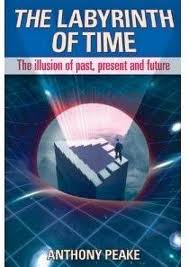Times When We Function Best
By paying attention to our body clocks, we can figure out what times we function best at certain tasks, and decide whether to put them aside for later–or do them right away. This can range from manual tasks to creative thinking to the best time to take a nap.
Many of us are locked into schedules at home or at work, but when we DO have a choice, it’s important to know what will be the most productive choice to make. Disruption of circadian rhythms (our body’s natural clock) has been linked to diabetes, depression, dementia and obesity.
read more
 Ever wondered whether or not we can move through time? Could this dream actually be a reality ALREADY? Listen as Anthony Peake, the author of the Labyrinth of Time, explains some of the greatest mysteries of time in a whole new way. Ever had a time slip? Ever found yourself repeating an event? Ever wanted to see into time or even move through it?
Ever wondered whether or not we can move through time? Could this dream actually be a reality ALREADY? Listen as Anthony Peake, the author of the Labyrinth of Time, explains some of the greatest mysteries of time in a whole new way. Ever had a time slip? Ever found yourself repeating an event? Ever wanted to see into time or even move through it?